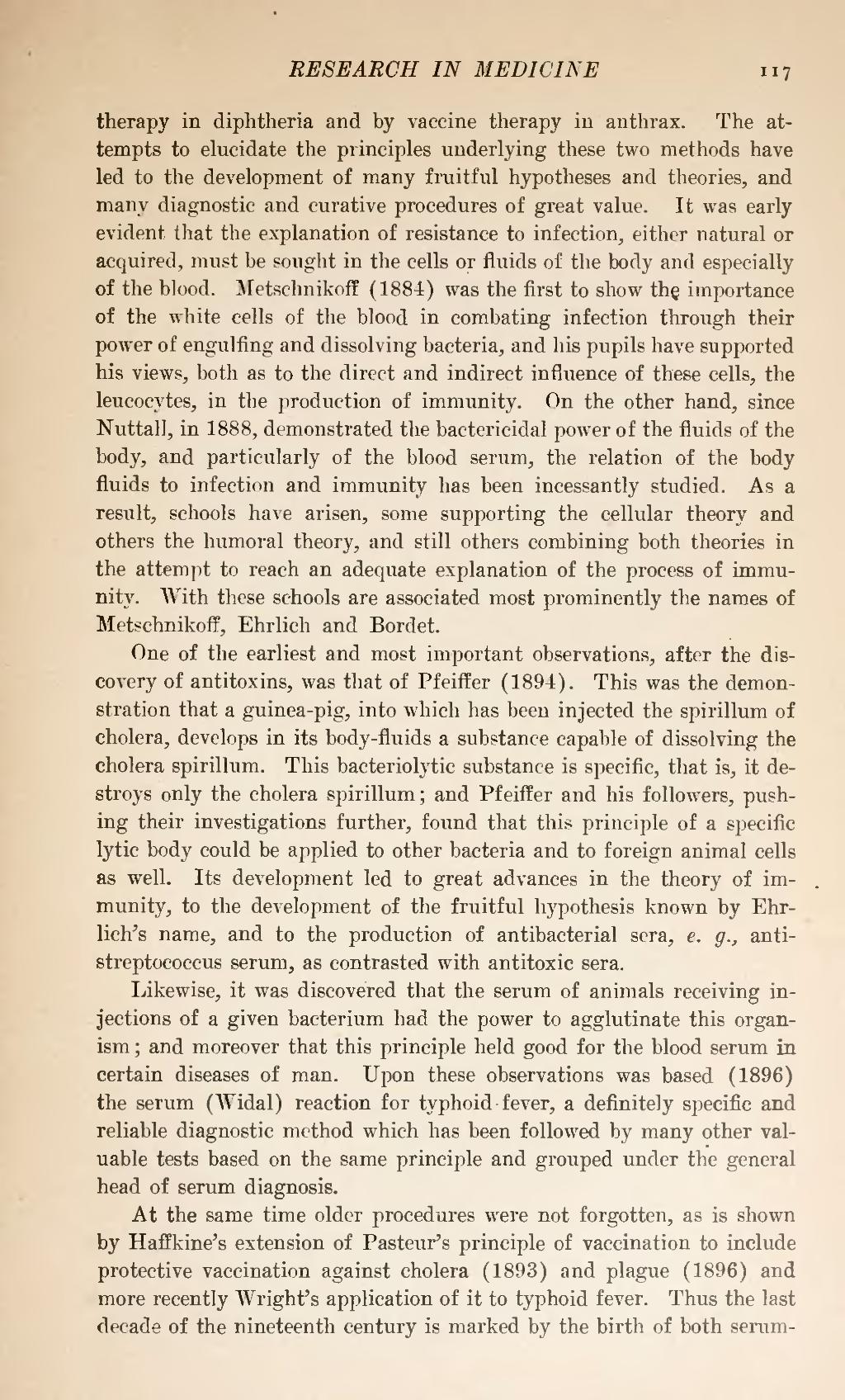therapy in diphtheria and by vaccine therapy in anthrax. The attempts to elucidate the principles underlying these two methods have led to the development of many fruitful hypotheses and theories, and many diagnostic and curative procedures of great value. It was early evident that the explanation of resistance to infection, either natural or acquired, must be sought in the cells or fluids of the body and especially of the blood. Metschnikoff (1884) was the first to show the, importance of the white cells of the blood in combating infection through their power of engulfing and dissolving bacteria, and his pupils have supported his views, both as to the direct and indirect influence of these cells, the leucocytes, in the production of immunity. On the other hand, since Nuttall, in 1888, demonstrated the bactericidal power of the fluids of the body, and particularly of the blood serum, the relation of the body fluids to infection and immunity has been incessantly studied. As a result, schools have arisen, some supporting the cellular theory and others the humoral theory, and still others combining both theories in the attempt to reach an adequate explanation of the process of immunity. With these schools are associated most prominently the names of Metschnikoff, Ehrlich and Bordet.
One of the earliest and most important observations, after the discovery of antitoxins, was that of Pfeiffer (1894). This was the demonstration that a guinea-pig, into which has been injected the spirillum of cholera, develops in its body-fluids a substance capable of dissolving the cholera spirillum. This bacteriolytic substance is specific, that is, it destroys only the cholera spirillum; and Pfeiffer and his followers, pushing their investigations further, found that this principle of a specific lytic body could be applied to other bacteria and to foreign animal cells as well. Its development led to great advances in the theory of immunity, to the development of the fruitful hypothesis known by Ehrlich's name, and to the production of antibacterial sera, e. g., antistreptococcus serum, as contrasted with antitoxic sera.
Likewise, it was discovered that the serum of animals receiving injections of a given bacterium had the power to agglutinate this organism; and moreover that this principle held good for the blood serum in certain diseases of man. Upon these observations was based (1896) the serum (Widal) reaction for typhoid fever, a definitely specific and reliable diagnostic method which has been followed by many other valuable tests based on the same principle and grouped under the general head of serum diagnosis.
At the same time older procedures were not forgotten, as is shown by Haffkine's extension of Pasteur's principle of vaccination to include protective vaccination against cholera (1893) and plague (1896) and more recently Wright's application of it to typhoid fever. Thus the last decade of the nineteenth century is marked by the birth of both serum-
